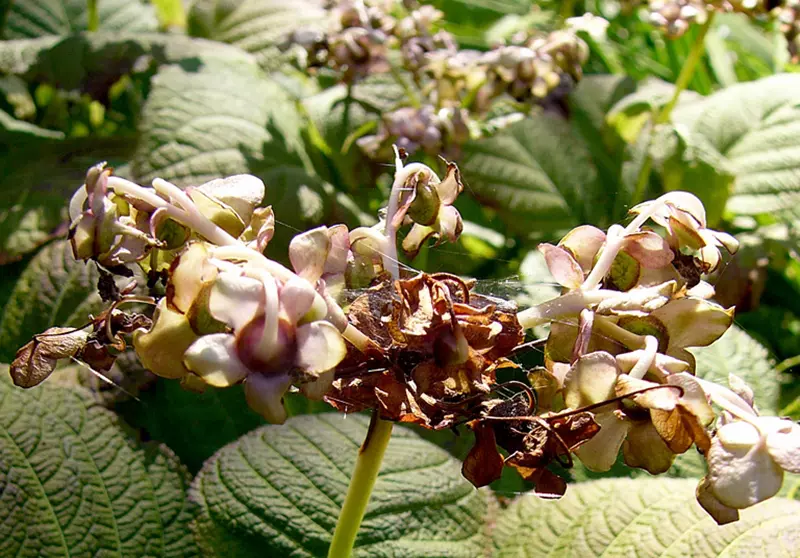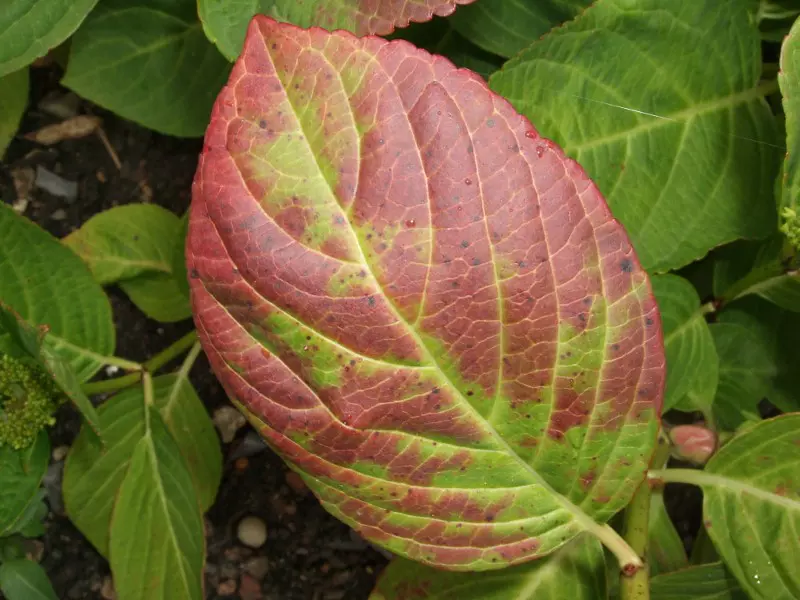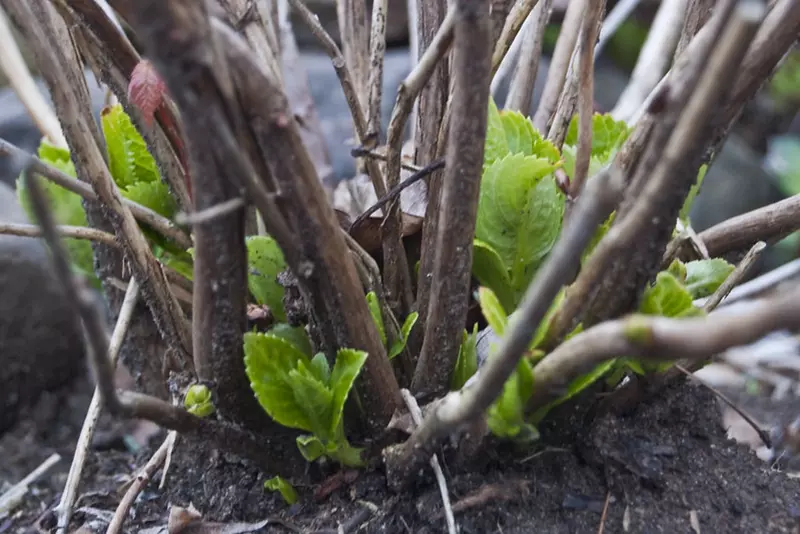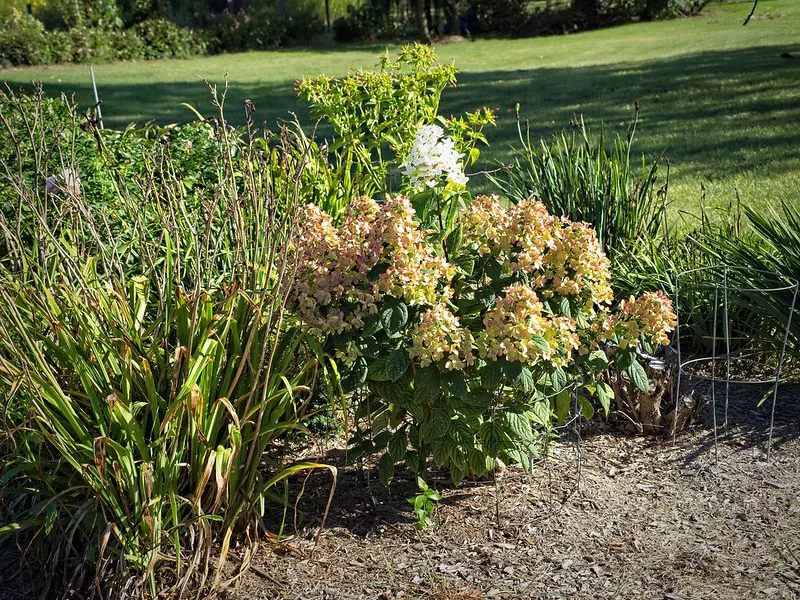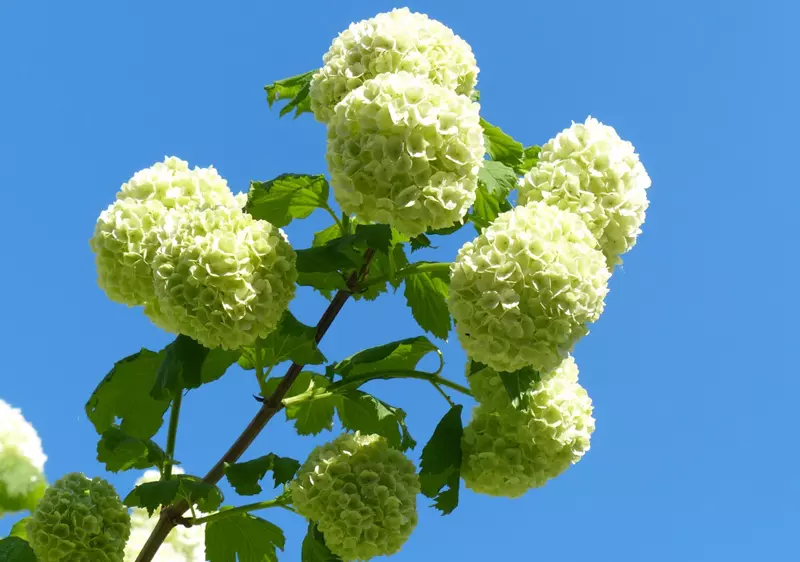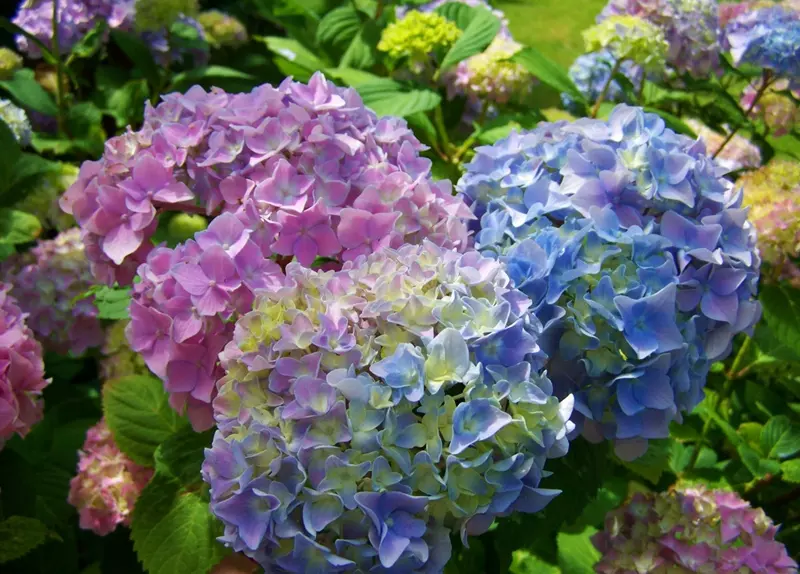Table of Contents
When the summer sun is blazing and temperatures soar, hydrangeas can quickly show stress-wilting leaves, scorched petals, and slowed growth. These stunning shrubs thrive in moderate conditions, but a heatwave can test even the toughest varieties. Fortunately, there are proven ways to help your hydrangeas not only survive but stay healthy and beautiful through extreme heat.
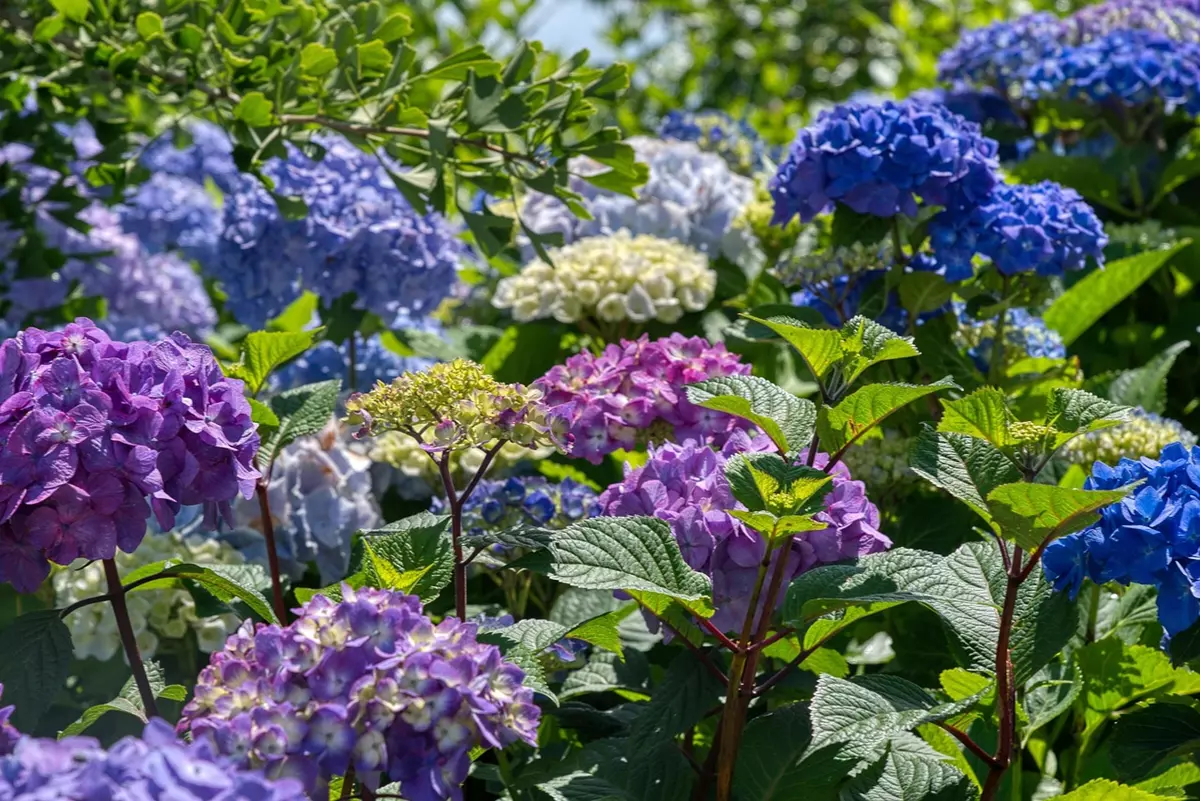 Source: pixabay.com; Author: Gabriele Lässer / webentwicklerin; License: Pixabay Content License
Source: pixabay.com; Author: Gabriele Lässer / webentwicklerin; License: Pixabay Content License
Quick Answer
At dawn, water deeply (moisten top 6-8″ / 15-20 cm), add 2-3″ mulch, give 30-50% temporary shade, pause fertilizer, avoid heavy pruning, consider light evening mist in dry heat, and move containers to bright shade with frequent moisture checks.

1) Water Deeply and Consistently
Deep, early-morning watering builds resilient roots and reduces midday wilt. Watering thoroughly but less frequently helps moisture reach the deeper root tips, while surface "sips" encourage shallow roots that struggle in heat. Aim to water before drought fully sets in, keeping soil moisture reasonably even rather than letting it swing from parched to saturated. Watering Hydrangeas: How Often and How Much? is a helpful companion guide.
- Depth & volume: Moisten the top 6–8 inches (15–20 cm) of soil at each watering. As a weekly guide, hydrangeas generally need about 1 inch (25 mm) of water in normal weather and up to 2 inches (50 mm) in hot, dry spells - roughly 25–50 L per m2 across the week. Use a rain gauge (or a straight-sided container) to measure what you’re actually delivering.
- Timing: Water at dawn. Morning irrigation reduces evaporation, supplies moisture for the day, and avoids water sitting unused overnight. Early evening is a secondary option in emergencies.
- Method: Deliver water slowly at the base with a soaker hose or drip line to ensure deep penetration and to keep foliage dry (helps reduce leaf spots).
- Frequency in heatwaves: Check in-ground plants every 24–48 hours and containers daily. Expect some midday flagging in extreme heat; if plants recover by evening, soil moisture is usually adequate - avoid the trap of chronic over-watering.
- Soil type matters: Clay-rich soils hold moisture but can be slow to re-wet once dry, so allow extra time for deep soaks; light, sandy soils drain quickly and may need smaller, more frequent deepings to hit that 15–20 cm target.
Tip: During multi-day heatwaves, a pre-dawn deep soak every 1–2 days (as soil and plant response dictate) is far more effective than multiple light sprinkles. Pair watering with a 2–3 inch (5–7.5 cm) mulch layer to cut evaporation and stabilise soil temperature, and give afternoon shade where possible. See also: Hydrangea care in July & August.
2) Provide Temporary Shade
While some hydrangeas (e.g. Hydrangea paniculata) tolerate more sun when soil moisture is maintained, most will perform best with morning sun and afternoon protection during heatwaves. If your borders lack natural dappled shade, create it temporarily until conditions ease. For planting ideas and longer-term placement, see How to Grow Hydrangeas in Shaded Gardens.
- Use light, breathable covers: Drape shade cloth, horticultural fleece or a lightweight sheet over canes or a simple frame so it doesn’t rest on the flowers. Ensure good airflow to reduce disease pressure.
- Prioritise the hottest hours: Shield plants through midday and afternoon when solar intensity peaks; allow some gentle morning light to sustain bud formation and sturdy growth.
- Move containers: Reposition pots to bright shade (dappled light), for example against an east-facing wall or beneath high-canopied trees. This also slows potting-mix dry-down in extreme heat.
- Watch for scorch vs. shade loss: Too much intense sun in dry soil can cause leaf scorch, yet very deep shade may reduce flowering. Aim for balanced light with cool roots.
- After the heatwave: Remove temporary covers once temperatures moderate to restore normal light and reduce humidity around foliage.
Tip: Pair temporary shade with a 2–3 inch (5–7.5 cm) organic mulch to buffer root-zone temperatures and conserve moisture. Panicle hydrangeas can cope with more sun than mopheads, but all types benefit from protection during exceptional heat.
3) Mulch Generously
Mulch is your hydrangea’s best friend in summer. A 2–3 inch (5–7.5 cm) layer of organic mulch (pine bark, composted woodchips, shredded leaves or leafmould, clean straw) helps to stabilise soil temperature, conserve moisture and keep competing weeds down.
- Apply correctly: Lay mulch over moist, weed-free soil and extend it at least to the plant’s dripline (ideally to the canopy radius) so the entire root zone benefits.
- Keep it off the crown: Leave a mulch-free collar around woody stems and the crown to avoid rot - keep a clear gap of roughly 10 cm (4 in).
- Choose coarse, breathable material: Chunky bark or shredded wood resists caking, improves infiltration and slowly adds organic matter as it breaks down.
- Top up annually: Replenish each spring (or after severe weather) to maintain the effective 5–7.5 cm depth as materials settle.
- Combine with smart watering: Mulch works best alongside deep, early-morning irrigation that reaches 15–20 cm depth.
- Weed suppression boost (optional): For persistent weeds, lay plain cardboard first, then cover with your organic mulch to block light while allowing rain to pass through.
Author's note: In my own borders, I’ve found that a steady 5–7.5 cm layer of shredded bark keeps the soil noticeably cooler and often saves me at least one watering on the hottest days. I like to top up with a thin layer of leafmould in late spring and I check the collar around the stems every few weeks to keep it clear. If the weather turns windy and hot, I’ll water first, then mulch - doing it the other way round is definitly less effective in my experience.
Important: Avoid "volcano mulching" (piling mulch against stems). Keep the collar clear so the base can dry between waterings and to discourage pests.
4) Reduce Fertilising During Heatwaves
Fertilising in extreme heat can stress the plant. In hot, dry soils, nutrient uptake slows and fertiliser salts can concentrate around roots, increasing the risk of scorch or burn. Focus on water and temperature management first; feed again once conditions cool.
- Pause feeding in peak heat: Hold off while plants are heat- or drought-stressed. Resume when temperatures moderate and the soil is evenly moist.
- If feeding is unavoidable: Do it at dawn or early evening on pre-watered soil, use a mild, water-soluble fertiliser at the label rate, then water again to wash nutrients into the root zone.
- Avoid high, quick-release nitrogen during heatwaves; it drives lush growth that demands more water and may be prone to scorch.
- Prefer gentle options once it cools: Slow-release granules or light organic top-dressings (well-rotted compost, leafmould) support recovery without sudden salt spikes.
- Containers need special care: Never feed into dry compost. In hot spells, flush pots periodically with plain water until 10% drains from the base to leach built-up salts, then return to a light, water-soluble feed schedule.
5) Prune Only When Necessary
Avoid heavy pruning during high heat; it encourages tender new growth that’s prone to scorch and further stress. In a heatwave, limit work to dead, damaged or diseased material and postpone shaping until the weather cools.
- Mopheads & lacecaps (Hydrangea macrophylla; incl. H. serrata): Flower buds are carried on last year’s stems (old wood). In the UK, prune lightly in mid-spring: remove spent flower heads to the first strong pair of buds and take out one or two of the oldest stems at the base to renew growth. If you need to reduce size, do it immediately after flowering to avoid cutting off next year’s buds.
- Panicle & smooth hydrangeas (H. paniculata, H. arborescens): Bloom on new wood, so a harder prune in late winter to early spring is acceptable. Cut back to a sturdy framework or by about a third to half to control size and keep strong flowering wood.
- Climbing hydrangea (H. anomala subsp. petiolaris): Buds are on old wood; prune after summer flowering only to contain growth and remove dead or crossing stems.
- General hygiene: Use clean, sharp tools; cut to healthy outward-facing buds; remove dead wood at any time. Wound paints are not required for routine shrub pruning.
- Heatwave rule of thumb: If in doubt, wait. Pruning that exposes inner leaves during extreme sun can lead to scorch; defer non-essential cuts until conditions moderate.
Major shaping/rejuvenation: Schedule for early spring (new-wood types) or right after flowering (old-wood types) when temperatures are reasonable, rather than during peak heat. For a step-by-step seasonal checklist, see Steps and Tips for Spring Pruning of Hydrangeas.
6) Mist Leaves in the Evening
If plants look limp by late afternoon, a brief, fine mist can help in dry heat by lowering leaf temperature and easing short-term stress. However, hydrangeas are prone to foliar diseases when leaves stay wet, so prioritise deep watering at the base and shade; treat misting as optional and climate-dependent.
- Best conditions: Use a light mist only in arid, breezy weather with good airflow. Avoid it in humid conditions where foliage dries slowly.
- Timing & technique: Mist in the late afternoon to early evening so there is at least an hour or two of drying before nightfall. Keep it brief and fine (do not soak the foliage) and avoid the flowers.
- Avoid peak sun: Never mist in strong, direct sun; droplets can exacerbate scorch and much of the water will be wasted.
- When not to mist: If you’ve seen leaf spots, mildew or botrytis on hydrangeas, skip misting entirely and keep water off the leaves. Focus on root-zone watering, mulch and airflow.
- Better first line of defence: Deliver water to the root zone (soaker/drip), add 2–3 inch (5–7.5 cm) mulch, and provide temporary shade; these measures are more reliable than foliar misting during heatwaves.
Why the caution? Many hydrangea foliar diseases are favoured by prolonged leaf wetness and/or high humidity. Keeping foliage dry and watering in the cooler parts of the day reduces risk while still helping plants cope with heat.
7) Keep Potted Hydrangeas Cool
Containers heat up and dry out faster than in-ground plantings, so small adjustments make a big difference. For set-up and ongoing care, see Hydrangeas in Pots: Planting and Care Guide for Balconies.
- Choose cooler containers: Opt for light-coloured, thick-walled pots (glazed ceramic or fibreclay). Avoid thin, dark plastic that absorbs heat.
- Double-pot for insulation: Slip the planted pot into a slightly larger decorative cachepot with an air gap between the two to buffer root temperatures.
- Lift off hot surfaces: Use pot feet or a trivet to reduce heat conduction from paving and to improve drainage/airflow.
- Move to bright shade: Reposition during heat spikes to dappled light (east/north aspect or beneath high canopies). Shield from midday/afternoon sun.
- Mulch the surface: Add 2–3 cm of fine bark or leafmould on the compost surface to slow evaporation and keep roots cooler.
- Group containers: Cluster pots to create a slightly cooler, more humid microclimate and to reduce drying winds.
- Watering routine: Check moisture twice daily in heatwaves. When you water, do it deeply until a little drains from the base; empty saucers after 20–30 minutes to prevent waterlogging.
- Salt management: If plants have been watered very frequently, flush the pot with plain water after the heat breaks to leach any built-up fertiliser salts.
- Feeding note: Avoid feeding during extreme heat; resume a light, water-soluble schedule only once temperatures and soil moisture are stable.
Signs Your Hydrangeas Are Heat-Stressed
Heatwaves show up on hydrangeas in several ways. Use the quick checks below to decide whether you’re seeing simple heat wilt, drought, or something else that needs action.
- Midday flagging that recovers by evening: Common in extreme heat even when soil is moist. Prioritise temporary shade and keep the root zone cool with mulch.
- Wilting that persists into the evening or next morning: Often a moisture deficit or compromised roots. Check soil 15–20 cm down; water deeply if dry.
- Brown, crispy leaf margins ("scorch"): Intense sun + dry wind + low soil moisture. Give afternoon protection and ensure consistent watering.
- Bleached or papery petals: Sunburn on exposed blooms; provide dappled shade during the hottest hours.
- Sudden leaf drop or bud abort: Severe acute stress, frequent in containers that have overheated or dried hard. Rehydrate slowly and move to bright shade.
- Container red flags: Compost feels hot, shrinks from the pot sides, or turns water-repellent. Bottom-water to re-wet, then give a slow, deep soak.
Not sure whether it’s heat wilt or true drought? Probe the soil with a finger or trowel to 15–20 cm and judge from moisture and temperature. For a fuller troubleshooting checklist on why hydrangeas droop in hot weather, see our dedicated guide.
When to act: If plants haven’t perked up by dusk after a deep morning watering, or if new shoots are collapsing, prioritise shade and slow, thorough re-watering, and hold fertiliser until recovery.
FAQ
How often should I water hydrangeas during a heatwave?
Water deeply at dawn to reach 6-8″ (15-20 cm) depth. In-ground plants may need a deep soak every 24-48 hours; containers often require daily checks.
What shade cloth percentage is best?
30-50% shade is a reliable temporary solution, especially to block harsh midday/afternoon sun.
Should I fertilize in extreme heat?
Pause feeding. Hot, dry conditions hinder uptake and can increase root stress from fertiliser.
Is evening misting safe?
Yes-lightly, and mainly in dry climates. Avoid strong sun and high humidity to limit scorch and disease risk.
How do I protect potted hydrangeas?
Use light-coloured pots, group containers, move them to bright shade, and monitor moisture twice daily.
A heatwave doesn’t have to end your hydrangea’s show. With deep watering, strategic shade, proper mulching and reduced stressors, these resilient shrubs can remain lush until cooler weather returns.
About the Author

Richard Seres-Nagy is a passionate gardener with over 20 years of experience in hydrangea care. He founded Hydrangea Library to share expert advice, step-by-step guides, and practical tips for fellow gardening enthusiasts.
Read More
